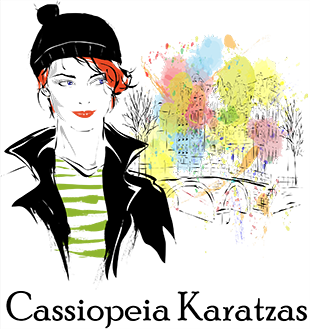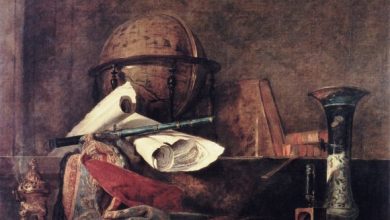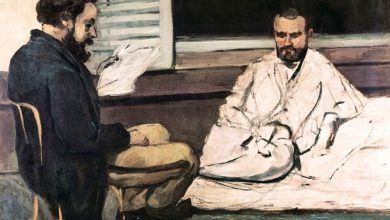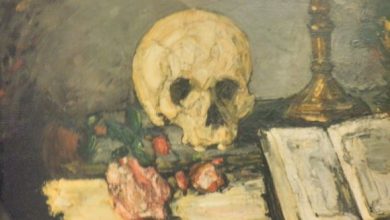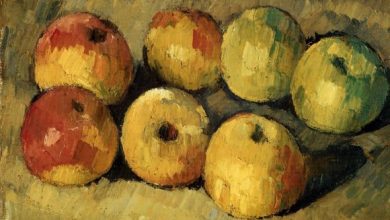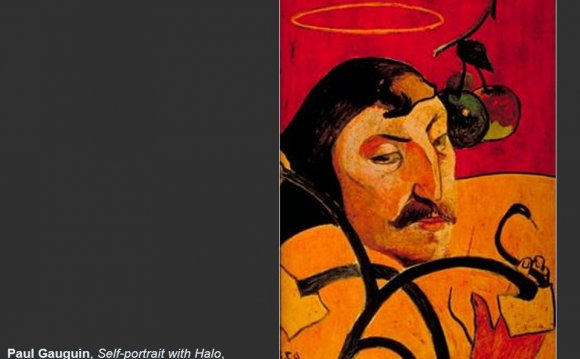
After returning to France to live with his grandfather, he joined the merchant marines, served a stint in the navy, took work as a stockbroker, married, and had several kids. His tumultuous life could have settled into middle-class ease, but then Gauguin went spectacularly off the rails.
I’ll leave it to the biographers and historians to explain it all. Suffice it to say his artistic obsessions drove a wedge between him and his family, and they were eventually estranged. Submerged in his work, his life became dissolute.
While his achievements are noteworthy, so is his decline. An alcoholic and a syphilitic, he died in 1903 at age fifty-four.
The wrong image
Gauguin painted several different self-portraits. In “Self Portrait with Halo, ” he puts himself in the place of Adam, the forbidden fruit within tempting reach. The halo overhead indicates his propensity toward good, while the snake he handles shows the lure away.
The stark red-yellow contrast above and below makes the divide all the more apparent. He stands in between, straddling both worlds. His eyes look away from the fruit and the serpent, as if he’s considering an action. The decision is his. He can go either way.
It’s true so far as it goes, and we know what Gauguin chose. But the painting also lies about something, at least for some of us. For those who desire to follow the upward call, to possess the halo the artist discarded, the great and weighty fact is that we are now in Christ, not Adam.
A better picture
In the seventh chapter of Romans, the apostle Paul gives us a self portrait as well. The apostle stands between his own red-yellow divide, his own stark choice. And he has trouble choosing the better path. He confesses inability to do the right thing and self-loathing for choosing the wrong.
It’s a wrenching passage, one all-too familiar and deeply personal for many of us. But unlike Paul the painter, Paul the apostle points the way out.
“There is therefore now no condemnation to those who are in Christ Jesus, who do not walk according to the flesh, but according to the Spirit, ” Paul says at the start of chapter eight. “For the law of the Spirit of life in Christ Jesus has made me free from the law of sin and death.”
Notice that phrase, “Spirit of life”? Paul picks up the theme of life and resurrection a few sentences later. “[I]f the Spirit of Him who raised Jesus from the dead dwells in you, He who raised Christ from the dead will also give life to your mortal bodies through His Spirit who dwells in you.” This is the same spirit who, as Paul says, “helps [us] in our weakness.”
Our true identity
We are not like Gauguin, stranded alone between holiness and evil. We are now in Christ and have the Holy Spirit. Because of that, we experience a powerful and empowering draw toward holiness.
Icons of the Resurrection like the one below show the enlivened Christ rising from the grave, his robe upswept and flowing. They portray energy and power. The scene is moving and alive, not the staid scape of Gauguin’s choice.
And this is the truer image.
The image of Christ is our real self-portrait because our identity is no longer in Adam. And the momentum of Christ erupting from the grave, the momentum of life, the momentum of the Spirit, is the same momentum that lifts us on our way toward God.
